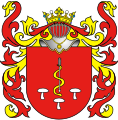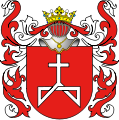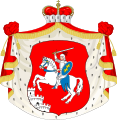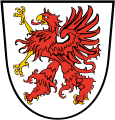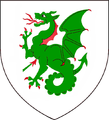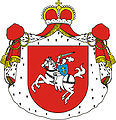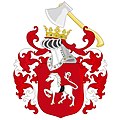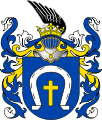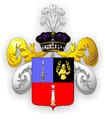
Mieczysław Karłowicz was a Polish composer and conductor.

Jastrzębiec is one of the most ancient Polish coat of arms. Dating back to the 10th century, it has been used by Poland's oldest szlachta families — Poland's Immemorial nobility — and remains in use today.

Polish heraldry is the study of the coats of arms that have historically been used in Poland and the Polish–Lithuanian Commonwealth. It treats of specifically Polish heraldic traits and of the Polish heraldic system, contrasted with heraldic systems used elsewhere, notably in Western Europe. Due to the distinctive ways in which feudal societies evolved, Poland's heraldic traditions differ substantially from those of the modern-day German lands and France.

Ślepowron is a Polish coat of arms. It was used by several szlachta families in the times of the Polish–Lithuanian Commonwealth. From the fifteenth century, the descendants of the Ślepowron family began to use names taken from their lands. This led to many different surnames being created within one family. The Ślepowron coat of arms is unique in Polish heraldry, in that it is the only coat of arms which is indicative a common origin of individual families, that is, the de Ślepowron, or Korwin, family. Wawrzęta Korwin de Ślepowron is the oldest known ancestor of the family, although the family's oral traditions claim that they descend from Marcus Valerius Corvus, a Roman general.

The Czartoryski coat of arms is a Polish–Lithuanian coat of arms, a variant of the Pogoń Litewska arms. It has been used by the Gediminid Czartoryski family.

Herb Prus III is a Polish coat of arms. It was used by several szlachta families in the times of the Polish–Lithuanian Commonwealth.

Korwin is a Polish coat of arms. It was used by several szlachta families in the times of the Polish–Lithuanian Commonwealth and by the Russian Counts Korwin-Litwicki tracing their origin back to Empress Catherine the Great.

The House of Czartoryski is a Polish princely family of Lithuanian-Ruthenian origin, also known as the Familia. The family, which derived their kin from the Gediminids dynasty, by the mid-17th century had split into two branches, based in the Klevan Castle and the Korets Castle, respectively. They used the Czartoryski coat of arms and were a noble family of the Polish–Lithuanian Commonwealth in the 18th century.

Wincenty Aleksander Korwin Gosiewskide armis Ślepowron – was a Polish nobleman, general, Lithuanian Field Hetman from 1654, Grand Treasurer of Lithuania and Lithuanian Great-Quartermaster since 1652, General of Artillery of Lithuania from 1651, Grand-Master of the Pantry of Lithuania from 1646.

Gosiewski is the surname of a Polish szlachta family whose members gained prominence in the Grand Duchy of Lithuania during the period of the Polish-Lithuanian Commonwealth.

Piotrowski is a Polish surname derived from the masculine given name Piotr (Peter). The name, and its variations indicate a family's origin as being from a town, such as for instance Piotrów and Piotrowo, or a toponym deriving from a holding, manor or estate. Variants and related names include Piotrowicz, Piotrowiak, Piotrowsky, Pietrowski, Pietrkowski, Pietrowsky, and Pietrowiak.

Skwierczyńskiof Ślepowron is the surname of a Polish szlachta (nobility) family from Podlaskie. The knight family came to the parish of Paprotnia in the area of Drohiczyn most likely from Masovia during the settlement led by Janusz I of Warsaw in the second half of the 14th century, or when PodlaskieUn transferred under the Lithuanian rule of Vytautas in 1405, who continued the settlement of Polish knights from areas of Masovia, as well as Łęczyca Voivodeship and Kuyavia in Podlaskie which had been deserted by the invasions of the Teutonic Knightss and Yotvingianss.

Beata Maria Helena Tyszkiewicz is a retired Polish actress and TV personality.
Danielewicz is a patronymic surname, meaning descendants of Daniel or Danilo. Several Danielewicz families were members of Polish–Lithuanian Commonwealth nobility and their descendants continue to the present.

The Korwin-Szymanowski family are Polish nobles who probably took their surname from the village of Szymany near Szczuczyn, in the Podlasie region of Poland in the Late Middle Ages. From the 16th-century onwards they were landowners and office holders in Masovia. In the 18th century during the Partitions of Poland, the family adopted the prefix "Korwin" to distinguish their lineage from other families bearing the same name. At the tail end of the 1790s a branch of the family settled on the Dnieper river in what is now Ukraine and produced a number of noted writers and musicians among whom was the composer, Karol Szymanowski.

Clan Ostoja (Moscics) is one of the largest and oldest knightly and heraldic families in Europe, belonging to the Polish nobility. The family is sealed with the Ostoja coat of arms.

The Scibor-Bogusławski family – a Polish noble family with the coat of arms of Ostoja, belonging to the heraldic Clan Ostoje (Moscics), originating from Bogusławice in the former Sieradz Province, Radomsko County.

The Kiedrzynski family - a Polish noble family with the Ostoja coat of arms, belonging to the heraldic Clan Ostoja (Moscics), originating from Kiedrzyn. Kiedrzyński was mentioned by Kasper Niesiecki in Herbarz Polski.
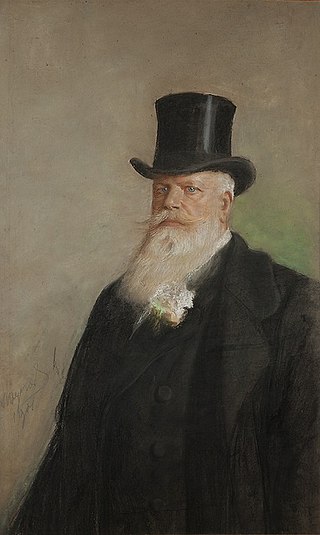
Ignacy Karol Korwin-Milewski was a Polish-Lithuanian art collector, political writer and traveler.









